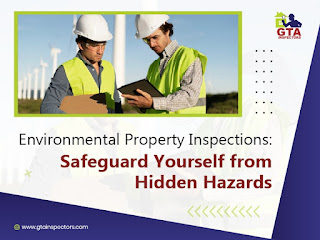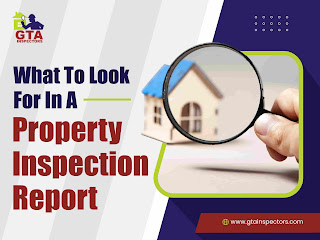Environmental Property Inspections: Safeguard Yourself From Hidden Hazards
Owning a house comes with numerous responsibilities, and one crucial aspect that should never be overlooked is the environmental effects on your property. These inspections play a vital role in safeguarding yourself from hidden hazards that may exist within your property.
By identifying potential environmental risks early, you can take necessary measures to mitigate them and ensure the safety of both occupants and the surrounding environment. This interactive blog will explore the importance of environmental property inspections and the hidden hazards they can uncover.
Ways To Safeguard Your Assets From Environmental Hazards Let us understand the impact of environmental problems on your property in detail. Further, we will demonstrate effective techniques to track down environmental property issues. Let’s dive in.
1. Understanding Environmental Property Inspections: Environmental inspections involve a comprehensive assessment of a property’s environmental conditions to identify potential hazards, contaminants, and risks. These inspections are typically conducted by qualified professionals specialising in environmental assessments and following specific protocols to ensure accurate results.
2. Common Hidden Hazards: a. Asbestos: Asbestos, once a widely used material, poses severe health risks when disturbed. Environmental property inspections can detect the presence of asbestos-containing materials (ACMs) in buildings. Prompt identification allows for proper removal or containment, reducing the risk of exposure.
b. Mold: Mold growth can lead to health issues like respiratory problems and allergies. Inspections can pinpoint areas with excessive moisture, which are prone to mold infestation. By addressing these issues promptly, you can prevent further spread and protect the health of occupants.
c. Lead-Based Paint: Properties developed before 1978 may contain lead-based paint, which is hazardous, especially to children. Environmental property inspections can identify the presence of lead-based paint, enabling you to take appropriate measures to address the problem and ensure a safe living environment.
d. Radon: Radon is a naturally occurring, odourless, and colorless gas that can seep into buildings. Extended exposure to radon increases the risk of lung cancer. Inspections can determine radon levels, allowing you to implement necessary remediation measures.
e. Soil Contamination: Properties located near industrial sites or former landfills may have soil contamination issues. Environmental property inspections assess the soil quality and identify potential contaminants, safeguarding the property and its surroundings.
3. The Importance of Environmental Property Inspections: a. Occupant Health and Safety: The primary reason for conducting environmental property inspections is to ensure the health and safety of occupants. By identifying hidden hazards, you can take appropriate actions to remediate and minimise potential health risks.
b. Legal Compliance: Environmental regulations vary across regions. By conducting inspections, you demonstrate due diligence and comply with applicable environmental laws and regulations. This can protect you from probable detriment and legal consequences.
c. Property Value Preservation: Undetected environmental hazards can significantly impact a property’s value. By addressing these issues proactively, you preserve your property’s market value and prevent potential devaluation.
d. Environmental Responsibility: Environmental property inspections Dubai align with sustainable practices and responsible property management. By identifying and remediating hazards, you contribute to a healthier environment and set an example for others.
4. How to Conduct Environmental Property Inspections: a. Engage Qualified Professionals: Hire experienced environmental consultants or inspectors with the necessary expertise and certifications to conduct comprehensive assessments.
b. Site Assessment and Sampling: Inspectors will assess the property, collect samples, and conduct laboratory testing when required. This process helps identify hidden hazards and determine the severity of contamination, if any.
c. Reporting and Recommendations: After the completion, you will receive a detailed report outlining the findings and recommendations for remediation. Use this information to prioritise and execute necessary actions to mitigate identified risks.
Conclusion: Environmental property inspections are indispensable for safeguarding yourself from hidden hazards within your property. By promptly identifying and addressing these hazards, you ensure the health and safety of occupants, preserve property value, comply with environmental regulations, and demonstrate environmental responsibility.
Prioritising environmental property snagging allows you to take proactive measures and contribute to a safer and more sustainable living environment. So, pay attention to this crucial aspect of property ownership and protect yourself from hidden environmental risks.


Comments
Post a Comment